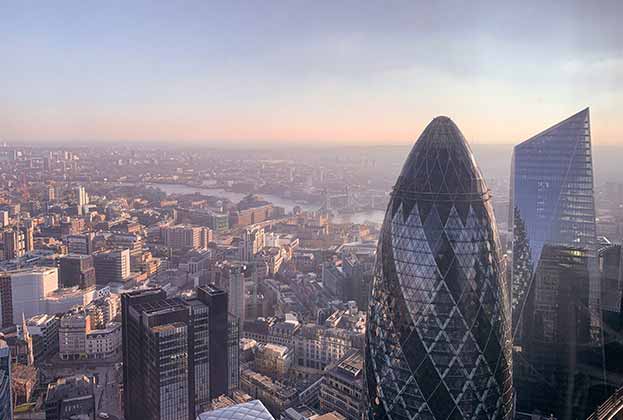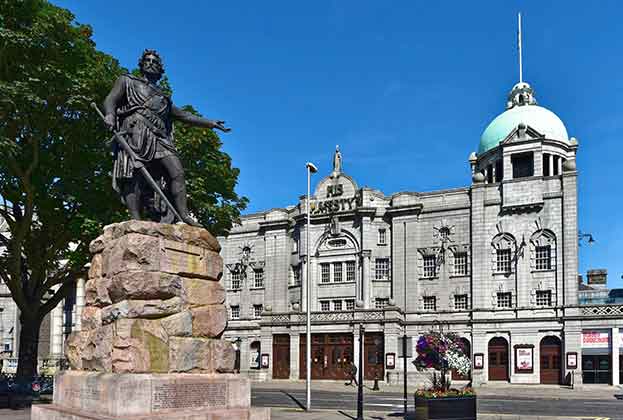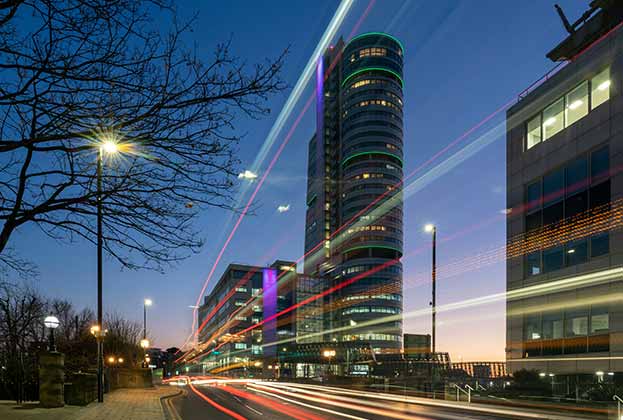Awareness of the climate emergency is at an all-time high, but there is work to be done. We now need to embark on a decade of urgent action and the property sector has a huge role to play, with the office sector in particular needing to reduce its energy demand by an average of 60 per cent by 2050.
Implementing green initiatives not only reduces a building’s environmental footprint and improve occupant satisfaction, it also makes sense from a business perspective. Certain sustainability efforts, such as environmentally friendly building materials and the use of energy-efficient lighting as seen at the ‘R plus’ office building in Reading, which uses energy efficient luminaires and roof mounted solar panels, can reduce expenses by up to 30 per cent, according to the Morgan Stanley Institute for Sustainable Investing.
Regional cities are making leaps and bounds in this area, with game-changing developments like Aurora in Bristol and Landmark in Manchester both achieving BREEAM Outstanding certification. North of the border, Cadworks – a 94,000 sq ft speculative office development in Glasgow – is being billed as 'Scotland’s most green office building'. The building is coated with an anti-viral, air-purifying paint that according to Fore Partnership 'eats pollutants and viruses for lunch' - leading to lower C02 emissions.
According to Historic England, the use of more historic buildings that offer some form of heritage and cultural belonging that links to a place with history can also improve a sense of wellbeing – creating spaces that enhance the physical and mental health and wellbeing and connect us to our community.
In fact, a new survey from Millennials and Historic Preservation: A Deep Dive Into Attitudes and Values shows nearly all (97 per cent) of millennials, the nation’s second largest generation, appreciate the value of historic preservation. In Glasgow, for example, 24 St Vincent Street, which was completed in 1889, has undergone an extensive refurbishment, turning it into one of the city’s most contemporary and environmentally friendly office spaces.
As well as helping the UK achieve its net zero carbon target, making buildings healthier and more attractive places to work will support employee retention. Millennials are 81 per cent less likely to move jobs in the next year if their employer focuses on sustainability and employee wellbeing, according to a recent Gallup-Healthways poll. According to the Environmental Protection Agency improved indoor air quality can result in up to 11 per cent gains in productivity with biophilia documented to improve mental and physical health, increase productivity and reduce carbon footprints.
The bottom line is that by being at the forefront of the climate movement, green buildings will not only attract the investors and the occupiers they need to benefit from the ongoing flight to environmental quality, but will also help to encourage workers back to the office when the pandemic begins to ease.
The brand enhancement that comes with putting sustainability at the heart of business will help companies attract and retain the best talent and clients, save money from efficiencies, and develop new products and services that get them ahead of the curve.
FURTHER INFORMATION
Contact Jonathan Gardiner or Clare Bailey
Read more: Does demand for green buildings lead to a premium?

-impact-the-office-sector(1).jpg)

.jpg)






